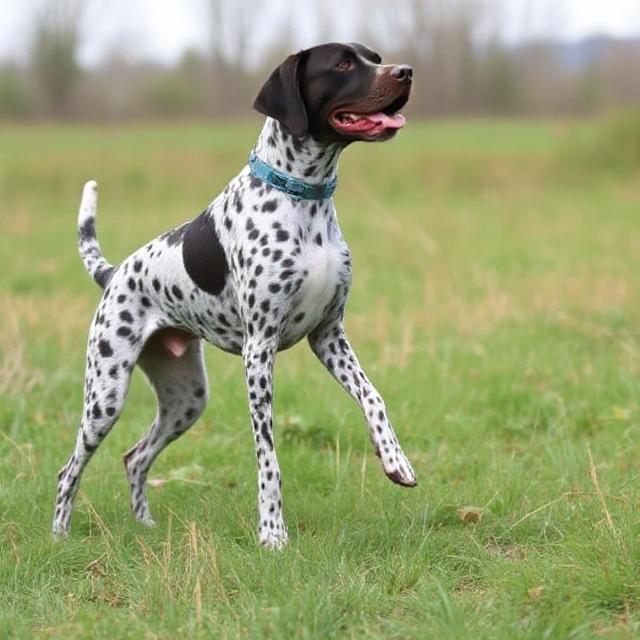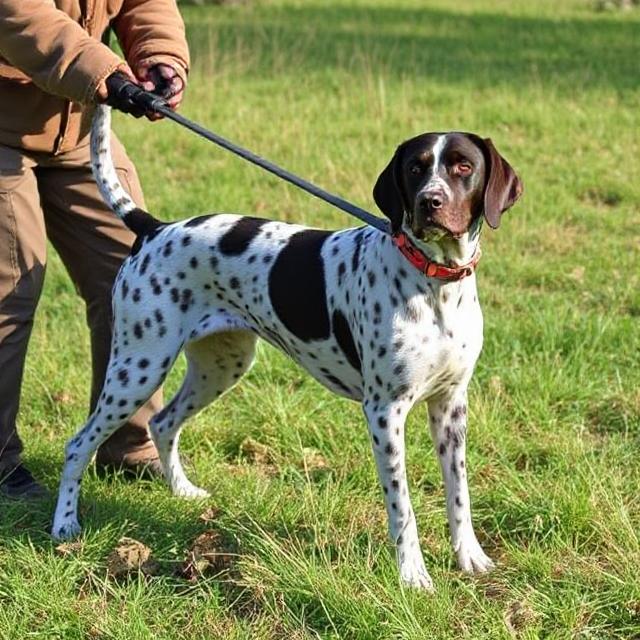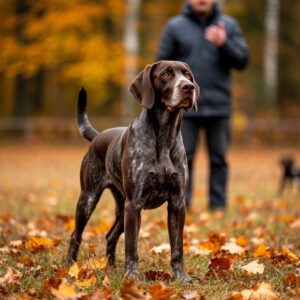Finished German Wirehaired Pointer for Sale – A Complete Buyer’s Guides
So you’re looking at a finished German Wirehaired Pointer for sale and wondering if it’s worth the investment. That’s totally fair. Picking a trained hunting dog isn’t like grabbing a mutt from the shelter or choosing a puppy from a cute litter. A finished German Wirehaired Pointer is a serious hunting partner, and getting the right one means understanding training levels, price ranges, and what really sets these dogs apart.
Started Dogs vs Finished Dogs – What It Really Means
You’ve probably seen listings that mention “started dogs” and “finished dogs,” but what’s the real difference?
A started dog is like a student driver. It’s been introduced to birds and basic commands, maybe even a little gunfire. But it’s still green. You’ll need to finish the training yourself or hire a pro.
A finished dog, though? That’s your seasoned professional. These dogs have been trained extensively to point, hold steady, retrieve to hand, and stay calm under pressure. They’ve worked in actual hunting situations and know how to read terrain, wind, and game.
Here’s a side-by-side comparison to make it clearer:
| Feature | Started Dog | Finished Dog |
|---|---|---|
| Obedience | Basic commands | Advanced, field-ready obedience |
| Bird Exposure | Some exposure | Full bird and gun conditioning |
| Retrieve to Hand | Inconsistent | Consistent and polished |
| Steadiness Post-Flush | Usually not reliable | Solid and dependable |
| Ready to Hunt Today | No | Absolutely |
| Price Range | $2,000 – $3,500 | $4,000 – $7,500+ |
Evaluating Professional Training – What Makes a Dog “Finished”
The phrase “finished dog” gets thrown around a lot, but it doesn’t always mean what it should. Evaluating professional training is key. Ask how long the dog’s been in training, what kind of program it went through, and what environments it’s been exposed to.
One of the best indicators of quality training? Field trial proven dogs. If a dog has performed in field trials or NAVHDA events, you’re looking at real-world experience under pressure. That says more than any sales pitch.
Also, watch for signs of shortcut training. Dogs that freeze up, break point, or get distracted easily might need a lot more work than advertised.

Trained Hunting Dog Prices – What You Should Budget For
Let’s talk numbers. Trained hunting dog prices vary widely depending on training level, pedigree, and performance history.
Started Dogs: Expect $2,000 to $3,500. Still need more work.
Finished Dogs: $4,000 to $7,500 is the norm.
Field Trial Titled Dogs: These can run $8,000 to $12,000+.
You’re not just buying a dog—you’re investing in training time, professional handling, vet care, bird exposure, and months (or years) of conditioning.
And keep in mind: a cheap “finished dog” might cost more in the long run if it needs retraining.
Field Trial Proven Dogs – Does It Matter?
Field trials aren’t just for ribbons and bragging rights. A dog that’s been tested in competition has already proven it can handle pressure, distractions, and unfamiliar environments. It also means it’s had exposure to different birds, terrains, and handlers.
If you’re on the fence between two finished German Wirehaired Pointers for sale, and one’s trial-tested? That’s a pretty solid tiebreaker.
Finding the Right Dog – Don’t Rely on Ads Alone
Anyone can write up a fancy listing with pretty photos. What matters is the behind-the-scenes work. When evaluating trained hunting dogs, especially finished ones, ask the seller for:
- A demo in the field
- Videos of obedience and bird work
- Health certifications (hips, elbows, eyes)
- A breakdown of the dog’s training history
- References from previous buyers
Avoid buying sight unseen. Finished dogs should be evaluated like you’d test-drive a used truck—performance, reliability, and history all count.
What Can Go Wrong – Risks of Poor Training
It’s tempting to go with a cheaper option, but if the training isn’t solid, you might end up with a dog that:
- Breaks point
- Won’t retrieve
- Is gun-shy
- Struggles with obedience in the field
Fixing that isn’t easy. Retraining can cost thousands, and in some cases, bad habits stick for life. That’s why evaluating professional training is so critical before you buy.
Matching Training to Your Hunting Style
Not all finished German Wirehaired Pointers are trained the same way. If you hunt upland birds, you need a dog that can work large fields, hold point, and navigate open terrain. If you’re into waterfowl, you need a strong swimmer that’s been exposed to cold, wet conditions and retrieves from blinds.
Be specific when talking to the seller. Ask where the dog has trained—open fields, marshland, dense brush? Has it retrieved from icy water? Worked in high heat? Seen decoys? This matters more than titles sometimes.

Maintaining Skills – What Comes After the Sale
Even the most polished finished dog needs tune-ups. Think of training like fitness—if you don’t use it, you lose it.
Here’s a simple routine to keep your dog sharp:
- Weekly drills on commands and recalls
- Monthly field days with birds
- Off-season work with dummies and decoys
- Social exposure to dogs, sounds, and varied terrain
Many pros offer follow-up sessions or seasonal refreshers to keep finished hunting dogs at the top of their game.
The Role of Temperament – It’s Not All About Skills
You’re not just getting a hunting tool—you’re getting a living partner. Temperament matters just as much as field ability.
Look for a dog that’s:
- Focused but not anxious
- Confident but not aggressive
- Resilient under stress
- Eager to work with people
A great hunting dog should also be easy to live with. After all, when the season ends, you’re still sharing your life with them.
Evaluating Professional Training – Questions to Ask
Don’t be shy when talking to breeders or trainers. You’ve got every right to know how your potential partner was trained. Here are a few must-ask questions:
How long was the training period?
What environments was the dog trained in?
What commands does the dog respond to?
Has it worked around other dogs?
Has it been exposed to children, loud noises, or travel?
You’ll get a better sense of how ready the dog is for your lifestyle—not just your hunts.
Final Thoughts – Choosing Wisely Pays Off
A finished German Wirehaired Pointer for sale might seem like a big investment, but when you get the right one, it’s worth every dollar. You get reliability, experience, and a dog that knows its job from day one.
There’s no rush. Take time to evaluate the training, understand the dog’s background, and match it to your style. With a trained hunting dog, the details matter more than the price tag.
Bulleted Summary – What to Look For in a Finished Hunting Dog
- Verified professional training program
- Bird and gun conditioning
- Field trial or NAVHDA experience
- Steady on point and reliable retrieves
- Health clearances (hips, eyes, joints)
- Matches your preferred hunting environment
- Consistent obedience under pressure
- Balanced temperament



